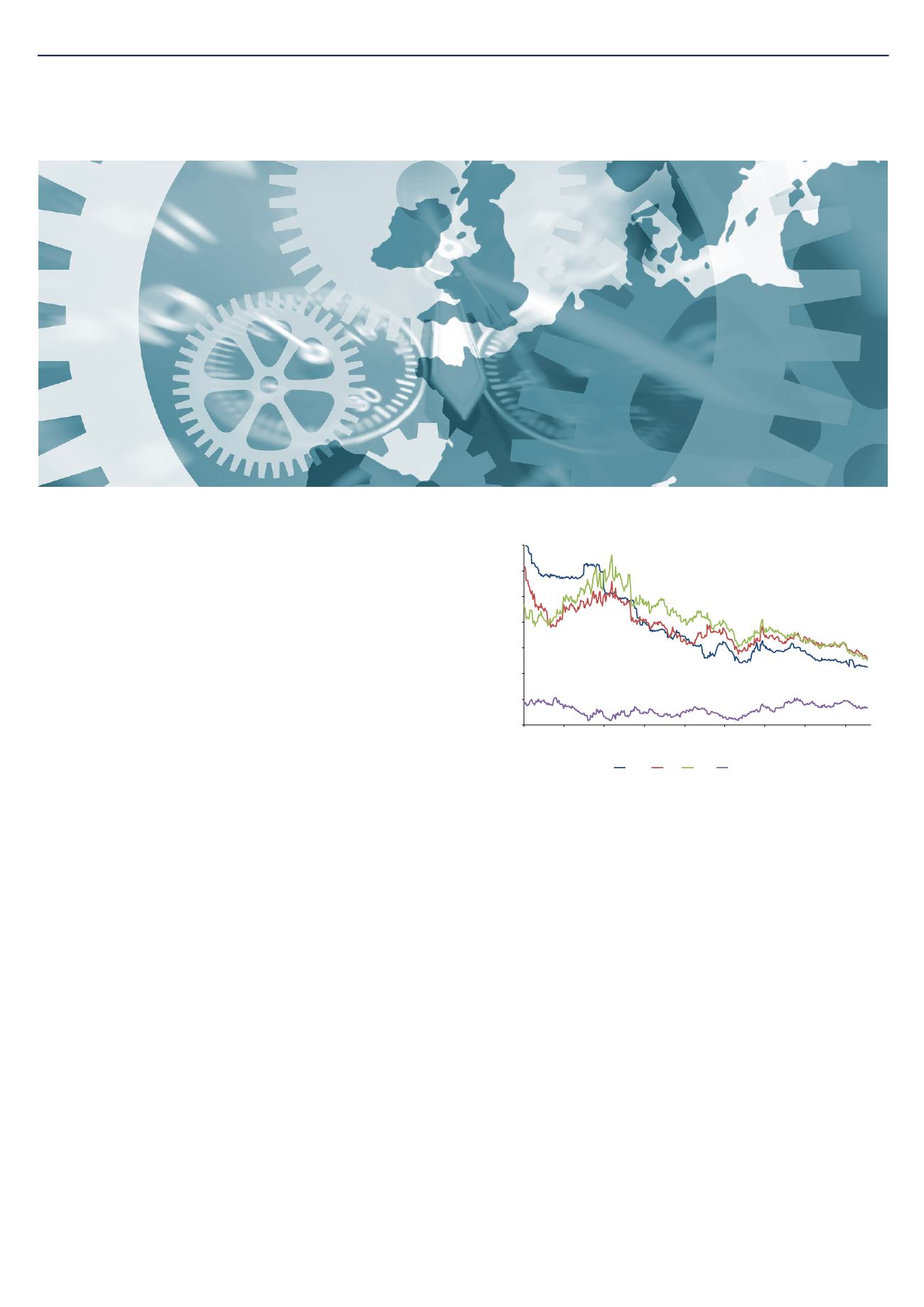
Irish Pensions Magazine Spring 2014
8
Analysis
Advertorial
Investment Opportunity in a Recovering Eurozone
T
here has been a perceptible shift in sentiment
surrounding prospects for the Eurozone economy.
Nobody is predicting stellar growth for the region in
2014, but there are signs that a recovery is gathering
momentum. Investors have become more enthused by
improving data trends, in both Europe and the wider
global economy, while a greater belief in the euro’s long-
term existence provided a tailwind of better sentiment.
That is evident in the rebound of Eurozone equities, and
particularly so in the share-price of companies based in
the more ill-affected areas of the periphery. And with
European companies expected to enjoy a pick-up in
profitability in the next couple of years, there is a sense
of optimism that has been absent for a while.
The improvement in market confidence can be traced
to ECB President Mario Draghi’s pledge in mid-2012
to do ‘whatever it takes’ to secure the euro’s future, a
commitment that the markets have put more store in
as time passes even though Draghi hasn’t actually had
to make good on that assurance. Events that would
in an earlier phase of the crisis have sparked market
turbulence have not generated the same type of semi-
hysterical response – Italian political stresses, ongoing
Greek funding concerns, Cyprus bank bailout; each
has been met with, at worst, a temporary period of
discomfort. In fact, most of the periphery’s stockmarkets
and sovereign bonds have outperformed through
the occasionally bumpy start to 2014, indicative of a
positive appetite for euro assets heretofore considered
more ‘risky’.
In 2010/2011, bailouts of Ireland, Greece and Portugal
along with special assistance to the banking sector did
not make for an appealing environment for investing
in euro assets. Fast-forward a couple of years and the
constructive approach of the ECB, and to a lesser extent
EU leaders, has engaged investors as threats to the euro
have eased. Ireland has returned to the capital markets,
its credit rating has been upgraded to investment grade
and its borrowing costs have touched record lows. Other
peripheral country bond yields have also narrowed the
gap with core sovereigns such as Germany (figure 1).
Figure 1: Peripheral borrowing costs fall
Source: Bloomberg. As at 18th February 2014
Most are aware of Ireland’s headline-making recovery,
but the extent of the improvement in Spain may be less
familiar here. In 2012 a €100 billion bailout package
was required, primarily to re-capitalise Spain’s banking
sector. Following restructuring within the sector, many
of the weaker Caja savings banks have been absorbed
into larger and sounder financial entities. Improving
transaction levels in the property market and falling
loan/deposit ratios are also encouraging. The Spanish
current account balance has improved from a 10%
deficit in 2007 to a 2% surplus in 2013, savings now
exceed investment at the national level, and Spain is
a net lender to the rest of the world. Export growth
is now running at about 7% per annum. Significant
labour reforms have been put in place and, while the
unemployment rate remains stubbornly high, even this
has started to edge lower. Challenges exist but there
are a lot of positives beginning to have an influence.
Financial market conditions are more appealing to
investors today and as the fear factor has lessened
the indiscriminate nature of the bias that persisted
against large parts of the euro equity universe has been
uncovered. Whether considered from a top-down or
bottom-up perspective, Europe is presenting a more
1
2
3
4
5
6
7
8
31/12/2011
31/03/2012
30/06/2012
30/09/2012
31/12/2012
31/03/2013
30/06/2013
30/09/2013
31/12/2013
10-yearBondYield%
Ireland
Italy
Spain
Germany
by Niall O’Leary


